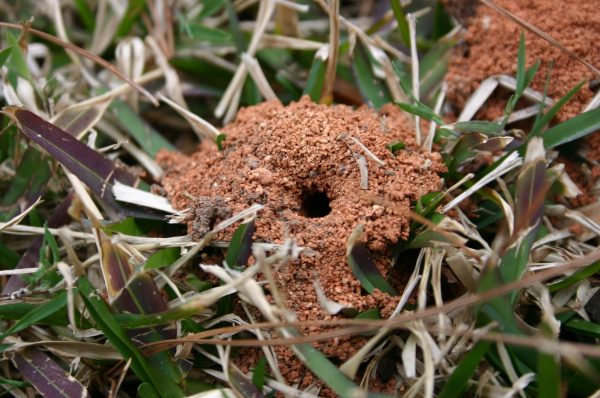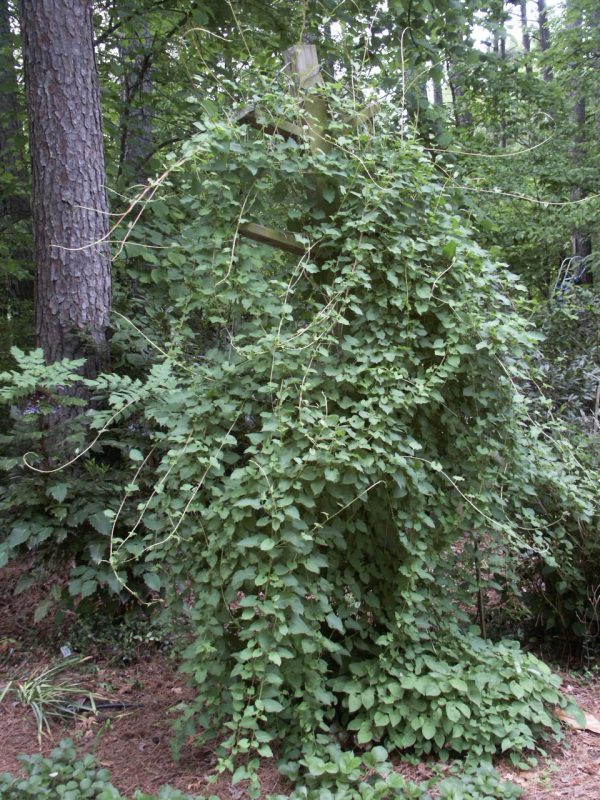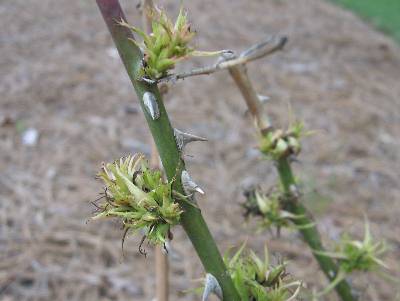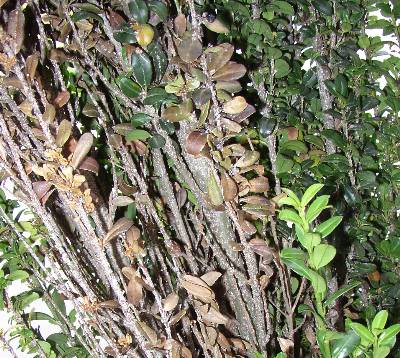Wildlife – Attracting with Good Habitat
Last week I listed food plants that attract wildlife to a landscape. Persimmon, apple, plum and blueberry plants were high on my roster but I also described oak, dogwood, serviceberry, beautyberry, cherry laurel, red buckeye, mulberry and honey locust.
I gave ideas for food plants for birds a few weeks earlier and followed that with an article about providing them with housing. Building a birdhouse is easy – but how does one build abodes for other creatures?
Though you might consider some of them vertebrata non grata , the two methods described below will bring lots of animal activity to your yard.
LOG PILES Wildlife expert Jeff Jackson says that different kinds of log piles attract different kinds of wildlife. A pile made of fast-rotting wood (sweetgum, elm, pine) quickly becomes home for snails, slugs, wood-eating beetles and various larvae. These creatures attract predators like garter snakes, salamanders and skinks.
The rotten wood also gives cold-blooded animals a good place to lay their eggs or to give birth. If you turn over an old woodpile at this time of year you may find an overwintering lizard or snake. No problem: just cover them with damp debris and lay bark pieces and small logs over them once again.
Birds and small mammals will visit your pile to find insects in winter and in summer. As the fast-rot pile decomposes down into the earth, keep adding more wood on top to keep your food chain intact.
Remember, the more log pile inhabitants you attract, from insects on up, the more varied the wildlife you’ll observe coming and going around it.
A second kind of woodpile for backyard wildlife is a slow-rot pile. Use small logs of maple, hickory, dogwood and oak to form a loose pile. It is good to stack the wood on an elevated support of stones or bricks to keep termites out and to keep the wood drier.
Mice, chipmunks and perhaps rabbits will call this pile home. Harmless rat snakes and king snakes will follow, seeking furry food.
If you don’t have suitable materials for a log pile, make a brush pile. Pile small-sized limbs four feet high to make a refuge for small vertebrates and a protected feeding area for certain ground-feeding birds. Evergreen boughs from cedar or hemlock on top of the pile shed rain and keep the interior dry.
ROCK PILES Dr. Jackson says a stone pile is an ideal place of refuge for many small animals. Chipmunks and squirrels eat seeds and nuts on top, close to a hole where they can escape predators. Basking lizards and snakes will be found there on sunny March days.
Since a stone pile has a beauty all its own, pick a scenic spot to place yours. Dig a wide hole, at least one foot deep, to begin the pile. This is the “basement” of the rock pile, where dwellers can go below the soil surface to escape hot weather in summer and to hibernate in cold weather.
Next, fill the hole with stones or rubble. Old concrete blocks or chunks of cement your builder left behind work well. Bigger items are better because the in-between cracks and crevices will be larger.
Arrange the heap thoughtfully as you pile it up. What your guests want is a labyrinth of golf ball-sized passageways connecting little interior rooms you have created.
Of course, save your prettiest rocks for the surface. Stones with lichens or moss look great on the outside of your pile. Set a few flat rocks on soft ground bedside the pile. Lift one every couple of months to see what insects and invertebrates have colonized underneath.
BRING YOUR NEIGHBORS TOGETHER If you have a small yard that limits the scope of your wildlife refuge, work with your neighbors to create a “wildlife neighborhood.” The larger the area, the greater the number and types of wildlife you will attract. You can even have your yards certified by the National Wildlife Federation as Backyard Wildlife Habitats. The Georgia Wildlife Federation (770-787-7887) will send you an application.
MORE INFORMATION












